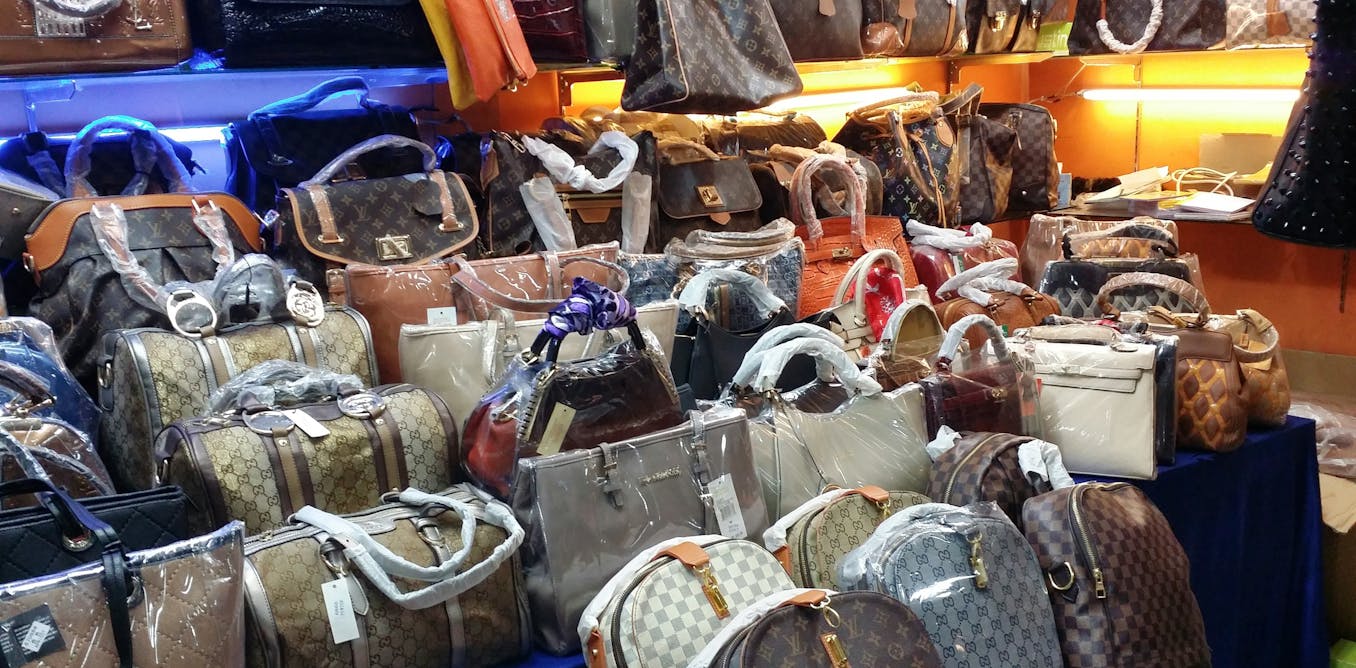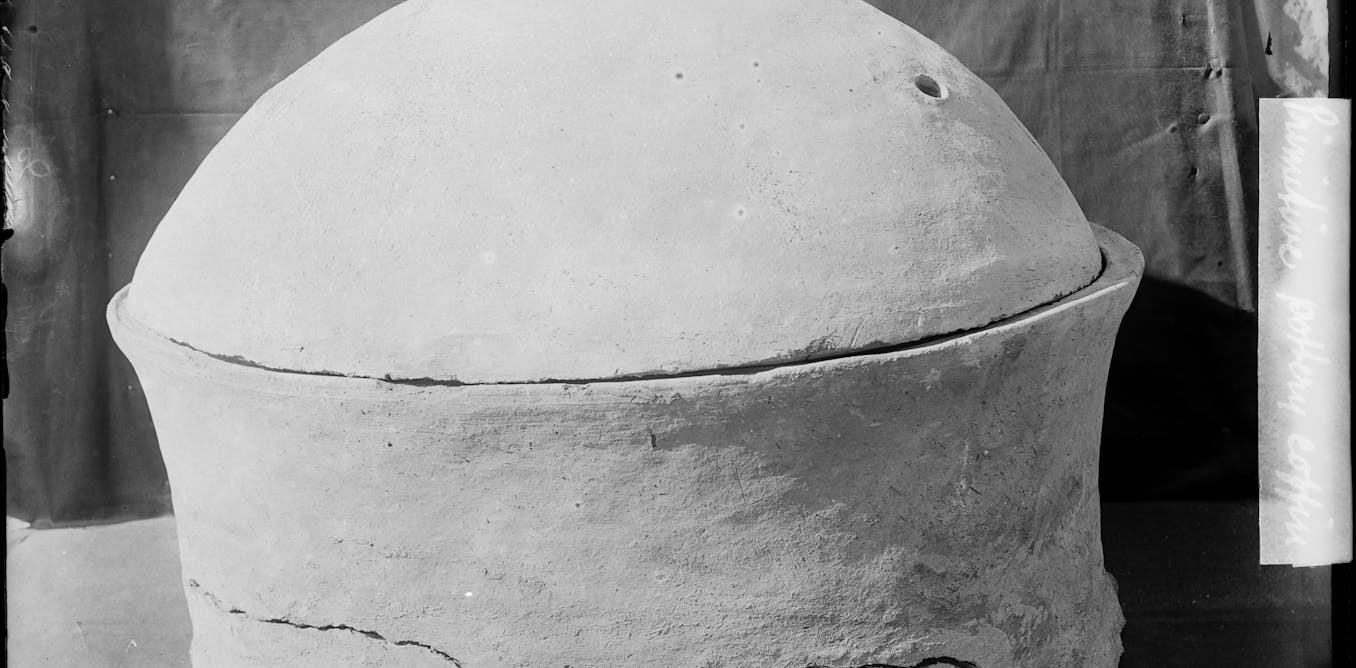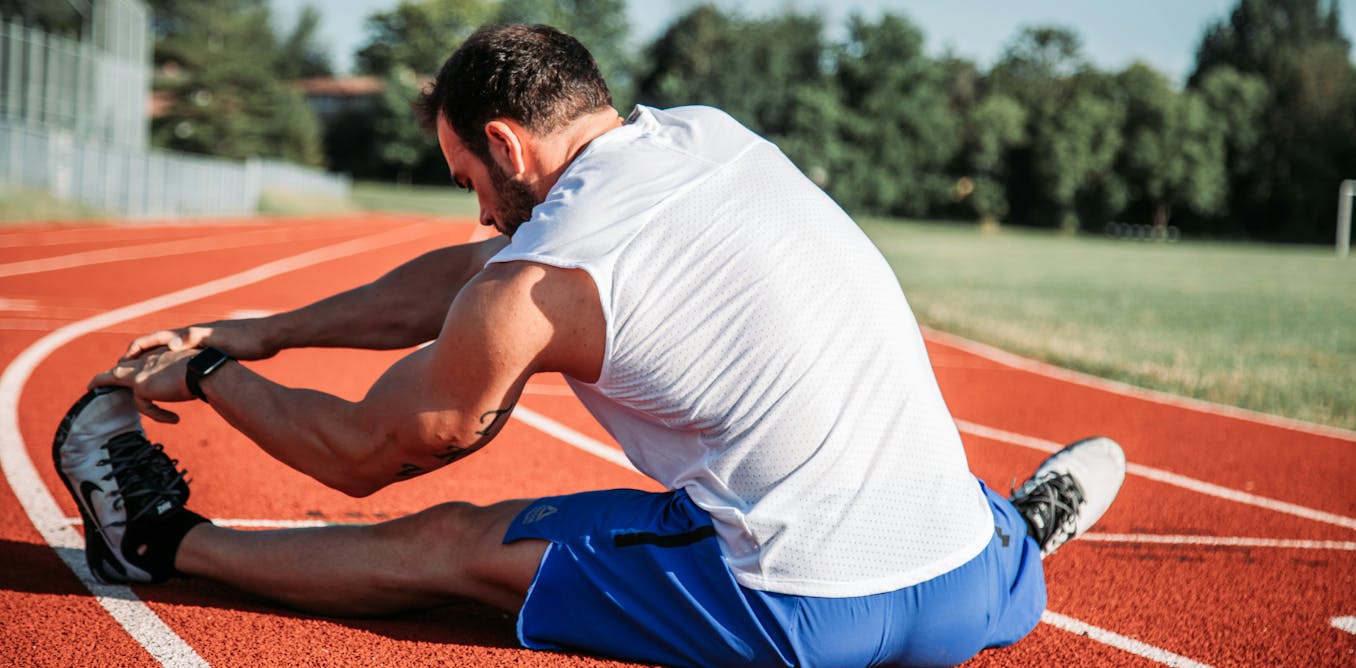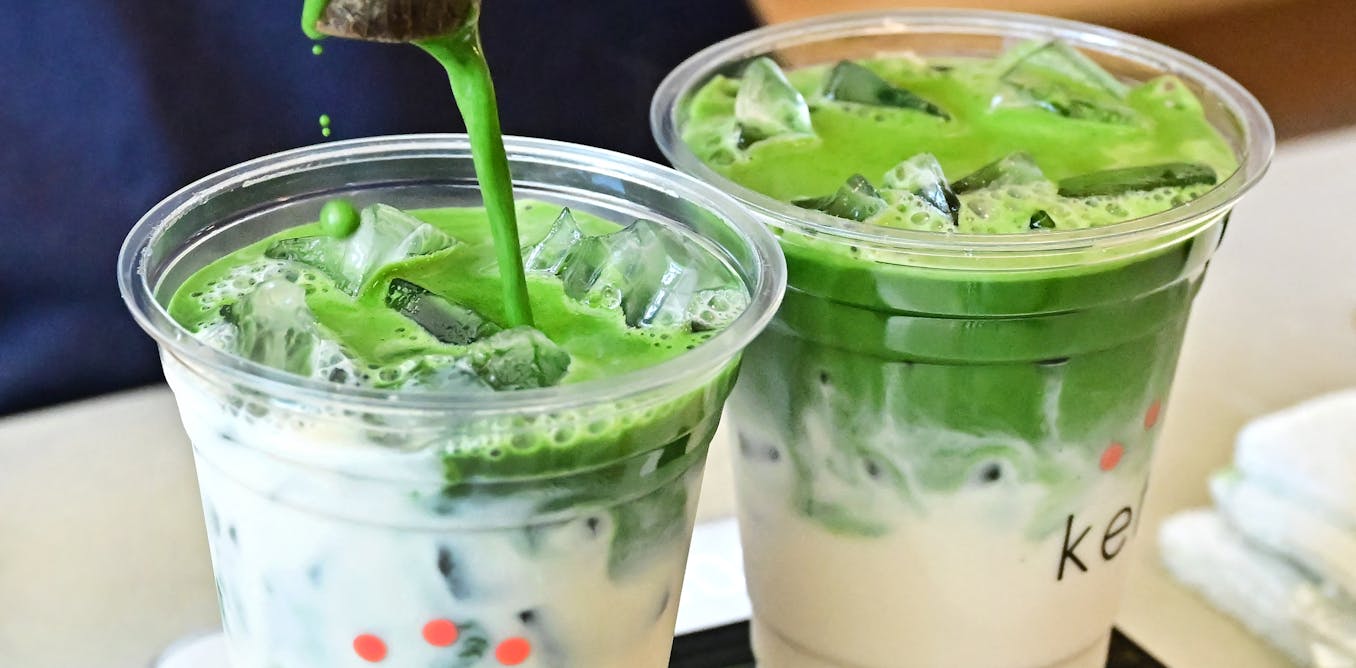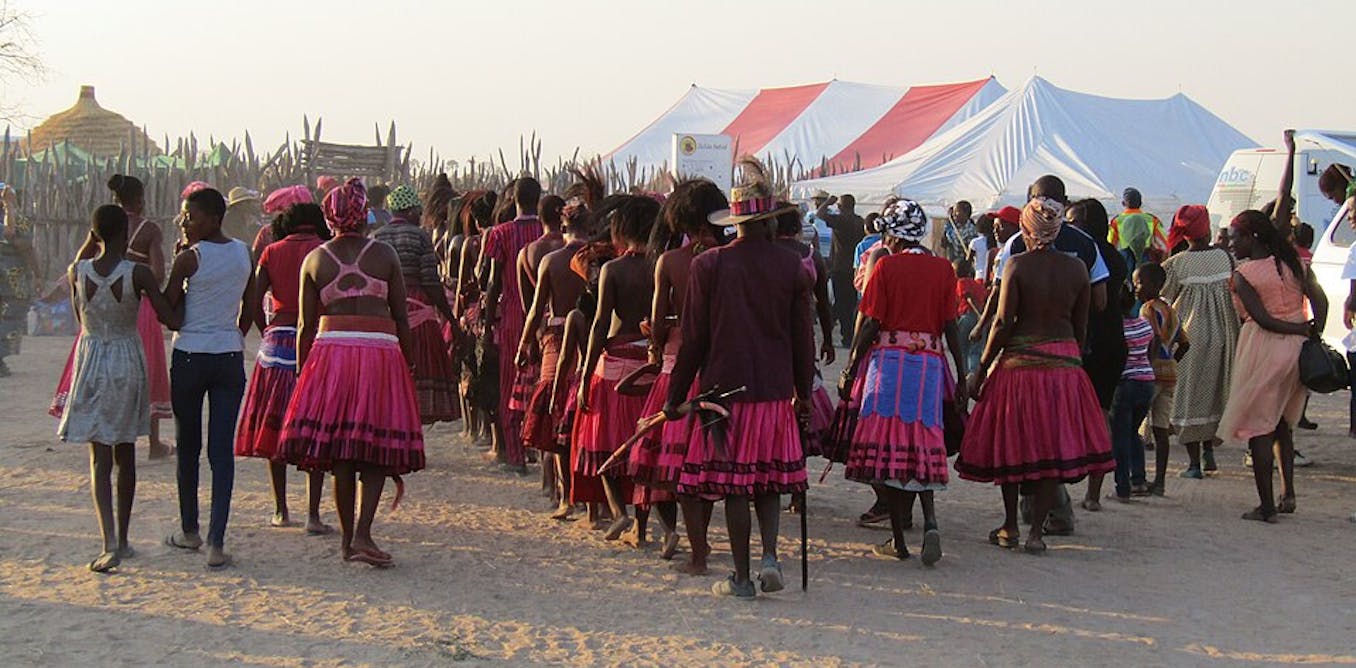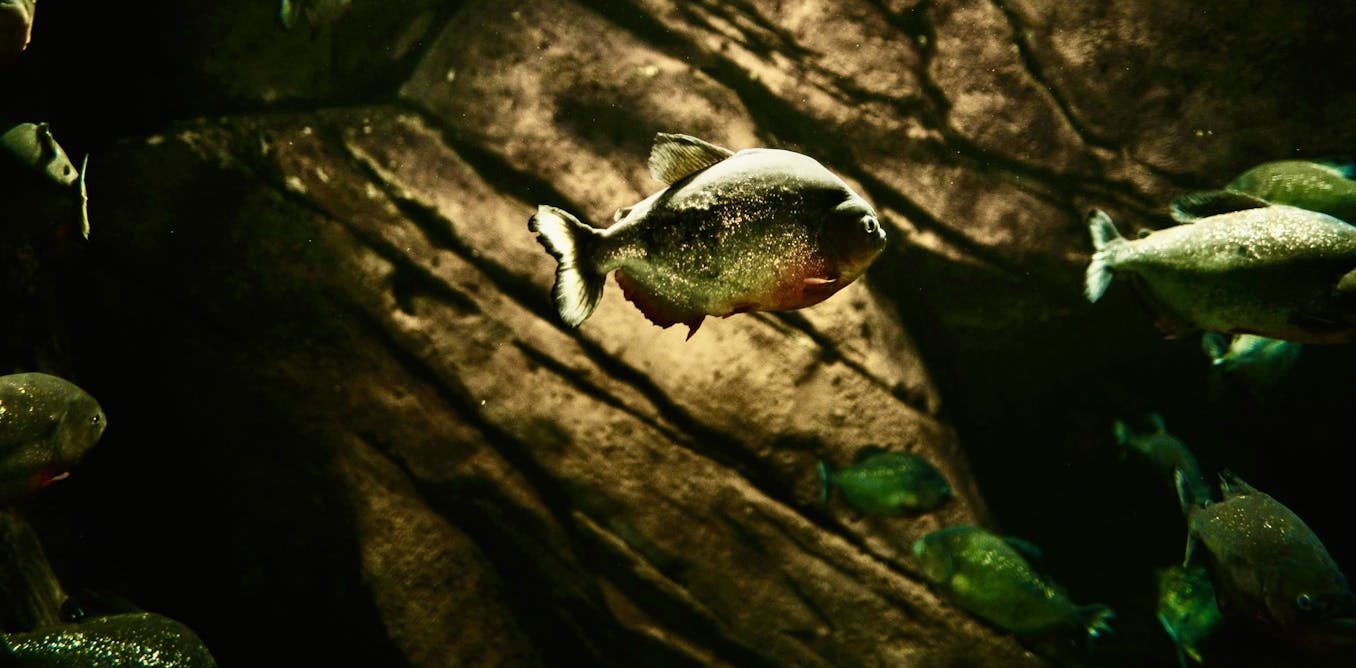Feeding 150 HUNGRY ALLIGATORS!
Today’s episode of Wild Field Trip takes us to the Florida Everglades where Coyote Peterson and a fearless young adventurer, Julia, get up close and personal with the iconic American alligators. They visit the Everglades Alligator Farm, where they witness the delicate process of alligator birth as a baby alligator hatches out of its egg. With the help of Julia, they coax the baby alligator out of its shell and even give it a name – Slimy. They learn about the vulnerability of the baby alligators and their camouflage to protect themselves from predators. Julia, who has never seen an alligator before, is thrilled by the experience and eagerly embraces this unique opportunity to interact with these amazing reptiles. This episode highlights the importance of wildlife conservation and educates young animal enthusiasts about the delicate life cycle of alligators in their natural habitat. It’s an unforgettable and educational journey into the wild world of alligators for both Coyote and Julia.
Watch the video by Brave Wilderness
[growls] I’m Coyote Peterson, and it’s always been my belief that the future of conservation begins with the next generation of animal enthusiasts. That’s why each episode, I’m taking kids just like you for the adventure of a lifetime. We’ll be going to some of the coolest locations
where we will explore unique habitats and go behind the scenes at wildlife sanctuaries to get up close and personal with some of our planet’s most incredible species. Together, we’ll brave the elements, embrace the wild, and witness the unforgettable.
So lace up your hiking boots and buckle your backpack ’cause we’re about to embark on a Wild Field Trip. The Florida Everglades are a Neotropical wetland that spans nearly 1.5 million acres. And keeping the balance of this diverse ecosystem
is one of our planet’s most iconic reptiles, the American alligator. Today, we’ll be visiting one of my favorite places in Florida, the Everglades Alligator Farm, where we will have a unique hands-on ability to learn about the delicate life cycle
Of this fascinating crocodilian from egg to apex predator. South Florida is the only place in the world where you can find both the American alligator and the American crocodile naturally existing in the same region. When it comes to getting up close with these top reptilian predators,
this location is going to be absolutely perfect. Now, Julia is from Arizona. She’s never been to Florida before. She’s never seen an alligator or a crocodile, let alone gotten a chance to interact with these species. So today is going to be extra special for her.
Braving the world of alligators with me is a fearless adventurer named Julia Maria. As a resident of Arizona, she is no stranger to the world of reptiles. And under the supervision of her parents, has gotten up close
with many of her home state’s most iconic species. LAURA: Julia’s dad and I are both environmental scientists. We really care that kids know that nature’s fun and, you know, something that they can really get excited about. So, as a parent, it’s thrilling for me
That she can be on Wild Field Trip. She loves reptiles. She’s used to the small ones like maybe lizards. She’s gonna be absolutely thrilled the first time that she sees an alligator. COYOTE: Julia is nine years old. This is her first time visiting
the watery realm of South Florida. And today’s reptilian experience is going to be on the next level. -JULIA: Hi, Coyote. -Good morning, Julia. -How are you? -Good. Are you excited to get up close with some crocodilians today? -Yes. -It’s gonna be super cool.
And I know this is your first experience with seeing alligators or crocodiles. And I figure before we look at the big guys, first, we gotta start at the smallest stage of a crocodilian which of course would be coming right out of the egg. -Really? -COYOTE: Really.
Do you wanna help me try to hatch out a baby alligator? -Yes. -COYOTE: All right. Follow me. This location is not a farm in the traditional sense, and none of these alligators are harvested for commercial use. Instead this establishment works to educate the public
about their importance of Florida’s ecosystem and how to be safe if you encounter one in the wild. But before alligators become a dominant predatory force, first, they start off small. Wow. COYOTE: Really small. Amazing. Those are alligator eggs.
And I wanted your very first experience with alligators to start with the tiniest alligators as possible, the ones that are coming right out the eggs. And look how we have timed this. See that? It’s a little tiny snout just poking out from the egg, which means we’re going to be present
For the birth of a baby alligator. How cool is this? Now, one thing that we can do is gently kind of massage the egg just a little bit to see if we can coax it to pop the rest of the way out. -You see how this crack… -JULIA: Yes.
COYOTE: …is running all the way down the length of the egg? That means that this alligator is completely ready to be fully hatched. It just needs to get the energy to go pop. COYOTE: Uh-hmm. Out in the wild, when an alligator’s mother comes back to the nest, ’cause they’re always guarding the nest.
Alligators are really good moms, right? Uh-hmm. They will actually assist in the birthing process by starting to unearth the eggs, digging them up and then they will actually use their teeth to very gently just start to crack the eggs which, of course, helps the babies to fully emerge.
So what I’m gonna do is I’m just gonna give it a little bit of a crack right there. Just a little bit of an assist. Um, how do the mother alligators tell when her babies are, um, hatching? Ready to hatch? Well, a lot of times when the first babies will come out,
They’ll hear a little bit of chirping. That little eh, eh, eh, eh. So that very first baby that’s born is sort of a little wake-up alarm for all the other babies and the mother to say that, “Oh, it is hatching time.” And it takes eggs somewhere between 60 and 70 days
Usually to incubate. And early October is when the babies start to hatch out. And did you hear that? You can hear it starting to chirp. -[chirping] -[Julia gasps] How cool is that? Very cool. Okay. Should we see if we can help it just a little bit further more?
Open up the egg just a tiny bit more on the top. [gasps] There we go. As soon as it gets– look at this. Right back just a little bit. There he comes. Look at that. -[gasps] -Wow. COYOTE: Wow. Here comes the little head. JULIA: Aw. COYOTE: There it is.
Oh. And there’s the eye. -Opened up. -JULIA: Little eye. COYOTE: And the first thing that this baby alligator -is seeing is your face. -[chuckles] How cool is that? Oh. Oh. Here he comes. Help me out. Go and get your hands in here. Go ahead.
There we go. Look at him come all the way out of the egg, just like that. JULIA: Oh, he’s very soft. COYOTE: Soft and slimy. [gasps] This is incredible. You are a part of a baby alligator birth. And there we go. It is out of the shell. All slimy. Still in that albumen.
A little bit attached to the egg still so we’re gonna let it just kind of rest up on top. And all of that is still good energy and nutrients for the baby alligator. -Do you wanna hold it? -JULIA: Yes. COYOTE: Okay. Put your hands out all the way over the nest,
Just like that. Let’s see. There we go. Wow. Check that out. That is you holding a newborn baby alligator. So what does it feel like for this to be your very first alligator encounter? It feels really good. And I can’t believe that this alligator’s first encounter is with me
And my first alligator encounter is with this alligator. That’s a pretty cool experience and it’s about as cute as can possibly be. Now, I know that you love to name little creatures, so do you wanna give this baby alligator a name? Slimy. Slimy. That is the perfect name for a newly-hatched alligator.
Now, take a look at the coloration of this baby alligator. All of that striping, right, that runs down the length of the body, when baby alligators are at this size specifically, they’re very vulnerable to predators. So the different coloration between the light and dark that runs through that banding helps them actually hide.
That camouflage keeps them well hidden in the light and the shadows. What do you think would be eating baby alligators like this? -JULIA: Like egrets. -Uh-hmm. Well, egrets kind of eat fish but… Well, I’ll tell you what, if an egret or a heron came across an alligator of this size,
It would make a very easy meal. And when baby alligators are this small, they do their best to stay close to their mother because the mother actually does an incredible job of protecting the babies until they get a little bit bigger and can fend for themselves.
Now, when it comes to this baby alligator’s mouth, you saw it’s already giving a little bit of a defensive maneuver there. Inside the mouth are little tiny teeth, like little nubs. So it’s already in predatory mode. And, at this size, it would be eating little tadpoles, tiny fish,
And any sort of invertebrates that it might come across, like little water bugs and stuff like that. So now that we’ve seen a baby alligator in the birthing process, coming out of its egg, what do you think about taking a look at an alligator next to a crocodile
So we can determine the differences -between the two species? -Yes. -Sounds good? -Yeah. All right. So we’re gonna leave this little gator right here with the other eggs, and we’re gonna check out something a little bit bigger. In their smallest and most vulnerable form,
baby alligators rank as one of nature’s most adorable reptilian babies. But it doesn’t take long for them to become formidable predators. Hatchlings average eight to nine inches in length, but with a plentiful food supply and healthy environment,
they can nearly triple in size during their first year of existence. Males grow faster and larger than females, and in their first five years of life are considered adolescents, growing constantly and reaching average lengths of three to five feet.
By year six, they’re old enough to breed. Between 16 and 26 years of age, most alligators reach a growth peak. Beyond thirty years, alligators grow very little, with adult females usually maxing out around nine feet in length
and males averaging around twelve feet. That’s a big reptile. But the American alligator isn’t the only crocodilian predator in Southern Florida. All right, Julia. Are you ready to reveal our crocodilians? -Yes. -COYOTE: One, two… Reveal. Now, one of these is an alligator
And one of them is a crocodile. Right now we’re going to show you the difference between these two very unique South Florida inhabitants. Now, Julia, I know you know quite a bit about alligators and crocodiles ’cause you’ve done exceptional research leading into this adventure,
So why don’t you describe what’s in your hands first? JULIA: I am holding the alligator. COYOTE: That’s right. And how can I tell that is because the crocodile has a V-shaped snout… COYOTE: Uh-hmm. JULIA: …and the alligator doesn’t. It has more of a U-shaped snout. COYOTE: That’s right.
Now, why do you think they have different snout shapes? Because they–well, crocodiles specialize more in eating fish. So they catch the fish and they kind of shake their head around and then they swallow the fish. Alligators specialize more in eating, well… -Pretty much anything. -…anything. Anything. Yeah. Uh-hmm.
And their jaws are specifically designed for biting and crushing. Now, when you get real close to those teeth, you can see that the teeth between the crocodile and the teeth of the alligator are also quite different. How would you describe the–whoa. That was a close snap, wasn’t it?
Why don’t you explain the alligator’s tooth structure? Well, alligators can hide their lower teeth while crocodiles can’t really do that. COYOTE: That’s right. With the crocodile, you know what they always say, you gotta have that crocodile smile, which means that the teeth on the lower jaw also protrude and overlap
With the teeth on the upper jaw. Now, as we move from the head down to the middle section of our crocodilians, let’s turn them upright again, just like this. There are little pieces of bone covered in scale. Do you know what those are called? -JULIA: No. -COYOTE: Those are osteoderms.
And those osteoderms help to keep them protected. That’s sort of like a coat of armor. -Whoa. -Pretty cool, right? Yeah. Now, when we look at the tail, both tails are incredibly strong and muscular. But what do you notice about the design of the crocodile’s tails compared to the alligator’s tail? Any differences?
JULIA: Well, the ridges in the crocodile are more apparent than the ridges -in the alligator. -COYOTE: That’s right. I think that the tail of the crocodile makes it look much more dragon-like, doesn’t it? -Yes. -Now, when it comes to these animals being in the environment, do you know the big difference
Between where these two animals are found? Yeah. Crocodiles prefer more saline waters while alligators prefer more freshwater waters. That’s absolutely correct. So crocodiles are found closer to coastal areas while alligators are primarily inland. Now, Julia, if you were to have to pick a favorite between the crocodile and the alligator,
Which one would you say is your top pick? Well, I really like the alligator. But when it comes to amazing reptiles, I can’t really pick. I’d have to agree with that answer. And I think, at this point, we’re ready to move on to the alligator feeding frenzy. -Are you ready for that? -Yes.
COYOTE: Okay. See you later, alligator. JULIA: After a while, crocodile. COYOTE: Throughout their lifecycle, all crocodilians are considered avid hunters. And in order to appreciate the magnitude of their predatory nature, I want Julia to witness them in action.
And there is only one way to do that. Who’s ready to feed some alligator? Me! COYOTE: The alligator breeding pond houses nearly 150 adult animals. Julia and I will be feeding the gators from a secure platform so don’t be alarmed by the imagery you’re about to see.
We are both completely safe and out of the alligators’ reach. Before you do this, I wanna make you aware that the second we start the feeding frenzy, things are going to get incredibly chaotic. But it’s important to note that alligators have extremely tough skulls.
So even if you see alligators chopping onto each other, that’s just a part of their natural behavior. They’re really just going after the fish. Okay. I’m gonna count you down. Are you ready? Here we go. Three, two, one. Feeding frenzy. [laughs] Oh, my goodness. That’s an explosion of alligator power.
Look at all of the muscle and the speed. Ooh. -They’re getting ready. -How about that? Okay. So here we go. Let’s take the next tilapia. I’m gonna let you go for tilapia number two. And let’s get another big reaction. Go for it. -JULIA: Ooh. -COYOTE: Nice. Good throw. High fives.
That’s a slimy fish high five right there. All right. Another tilapia for you. We’re gonna do a double throw. Ready? One, two, three. Grab another one. This is where the feeding frenzy really gets crazy. There you go, boys. Julia and Coyote’s fish food truck is officially open for business. [dramatic music playing]
JULIA: Oh. Big boy right here with his mouth open. One, two, three. -JULIA: Ooh. -COYOTE: Score. -Yeah. -Right into his mouth. JULIA: Let’s go. [dramatic music playing] COYOTE: Oh, look at this guy right here. You think I can get it right into… -Yeah. -…his open mouth? -Okay. -Ready? One, two, three.
Oh, it bounced off his nose. Oh, and that guy way back there got it. The American alligator has one of the most intimidating bite forces in the animal kingdom. These alligators vary in size, but a gator who weighs around 300 pounds,
like some of the biggest boys you see in the mix, have a devastating bite that will clock in around 1,500 pounds per square inch. For context, that would explode a watermelon like you chomping down on a juicy green grape.
This daily enrichment for the alligators may look like a violent cyclone of teeth and destruction but these animals are very much in tune with one another and any accidental bites rarely result in injury during a feeding frenzy such as this. That was awesome.
Julia, you did amazing. What does it feel like to have fed the most dominant predator in the Everglades? Well, I was nervous at first since they are such huge creatures and have an enormous diet, but it’s pretty cool seeing how they eat and a bunch of jaws going ma, ma, ma.
That was pure excitement. Getting to see alligators in action is truly an experience I don’t think you’re ever gonna forget, is it? -No. -COYOTE: All right. Why don’t we head out into the Everglades for sunset and have our final conservation conversation. -You ready for that? -Sounds good.
COYOTE: American alligators are keepers of the Everglades, so as the last stop on our adventure, I want Julia to experience the ecosystem that they are famously known to look after. This will be her first time entering the glades, and trust me,
there’s no better way to travel the saturated fields of sawgrass than on an airboat. [dramatic music playing] So, Julia, we have spent a pretty awesome day together. -Yes. -And we learned as much as I think we possibly could about the world of crocodilians.
What would you say was your favorite part of our adventure? Well, I really liked the start. That was really cool to see what it looks like when you have a new little baby alligator come out of the egg.
I also really liked where we fed the alligators. That was really cool, seeing how they eat and how, you know, they behave around each other. So with this being your first time you’ve ever seen an alligator, let alone gotten the chance to interact with one,
would you say you have a new appreciation for these predatory reptiles? JULIA: Yeah. I knew that they were really cool but this just blows my mind. [chuckles] I agree. Alligators have always been one of my favorite reptiles. And now that I got to share these cool creatures with you,
I think everybody out there watching is gonna have a new appreciation for why they’re so important for the Everglades’ ecosystem. The predators of our planet are often depicted in culture and media as monsters, many times even in their youngest form.
But what we need to recognize and share with the next generation is that monsters are often made through the misunderstanding of an animal’s true nature. Alligators may hunt with stealth and be armed with bone-crushing jaws, but they play a vital role
as keepers of the Everglades’ ecosystem and should be celebrated as heroes in the grand design of our planet. Throughout the Southeastern United States, encounters with these animals are common, especially in Florida. But it’s important to remember
that humans are not on the preferred menu list. That said, alligator safety is important. So if you get the chance to visit a location where these reptiles may be present, remain in tune with your surroundings. Don’t approach the water’s edge, don’t swim,
and certainly don’t attempt to feed or interact if you see an alligator in the wild. Follow these simple steps and your sighting of a crocodilian will be a safe one you will never forget. I’m Coyote Peterson. And I’m calling Julia Maria. Be brave.
Stay wild. We’ll see you on the next Wild Field Trip. [dramatic music playing]
About Brave Wilderness
The Brave Wilderness Channel is your one stop connection to a wild world of adventure and amazing up close animal encounters!
Video “Feeding 150 HUNGRY ALLIGATORS!” was uploaded on 01/29/2022 to Youtube Channel Brave Wilderness



